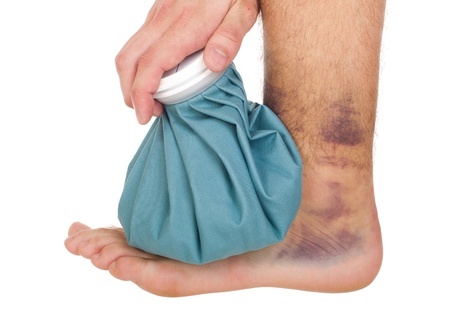
The ankle, as everyone knows, is the region where the leg meets the foot. It is not exactly a joint (it contains three joints); it is not a single bone (the tibia, fibula, and talus are all found in the area); and it is home to several tendons (like the Achilles), muscles, and ligaments. It is absolutely essential to proper mobility and foot and leg function. However, the presence of so many bones and ligaments means the ankle is particularly susceptible to injury. When it comes to the ankle, two of the most common injuries are fractures and sprains. Here, we will highlight the similarities and the differences between the two.
An ankle sprain occurs when the ligaments surrounding the anklebones twist unnaturally and become torn or over-stretched. This may be caused by a sports injury, a fall, an accident, or a simple misstep. The symptoms of an ankle sprain include swelling, bruising, and pain in the lower leg. Immediate treatment of a sprained ankle includes R.I.C.E.—rest, ice, compression, and elevation. It might also be necessary to wear a brace in order to prevent re-injury. In some severe cases, surgery may be recommended.
In many ways, a broken ankle and a sprained ankle are almost indistinguishable. A broken ankle occurs when one of the three bones of the ankle is fractured. All of the above causes of ankle sprains might also cause a broken ankle, but it depends on the situation and the individual. Swelling, bruising, pain, and tenderness are all symptoms as well, with the added inability to put much weight on the ankle and a possible deformity to the bones of the ankle. Initial R.I.C.E. treatment to calm down the swelling and pain is recommended, but broken ankles are more likely to require surgery if the ankle is unstable or the bones have fragmented significantly. Physical therapy is typically recommended to regain strength in the affected ankle.
Ultimately, you will need to see a board-certified podiatrist like Dr. Ryan L. D’Amico to determine if you have a sprained or a broken ankle. At Syracuse Podiatry’s office in Fayetteville, Dr. D’Amico can use a digital x-ray machine or order an MRI to get a better look at what might be going on. If you want to get to the bottom of your ankle injury as soon as possible, do not hesitate to contact us at (315) 446-3668 today!
